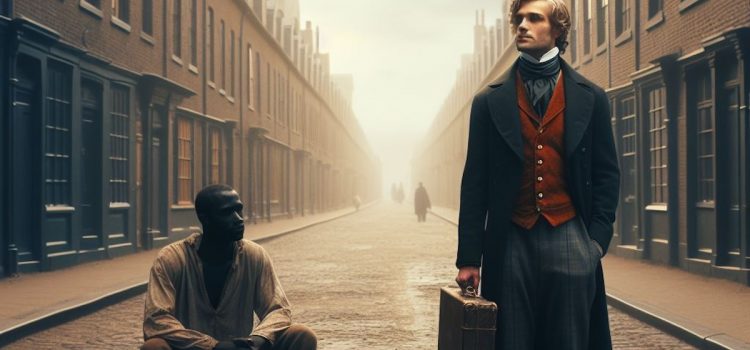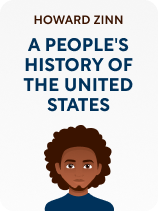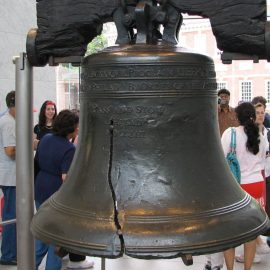

This article is an excerpt from the Shortform book guide to "A People's History of the United States" by Howard Zinn. Shortform has the world's best summaries and analyses of books you should be reading.
Like this article? Sign up for a free trial here.
In what ways did enslaved Africans resist oppression within the American colonial system? How did the exploitation of poor whites serve the interests of the colonial elites?
The class system in colonial America was hierarchical, with wealthy elites exploiting enslaved Africans, poor whites, and women. Despite facing challenges, these groups resisted oppression and fought for equality within the colonial society.
Read more to learn about “drawing the color line” in colonial America, according to Howard Zinn in A People’s History of the United States.
The Classes of Colonial America
Through the 17th and 18th centuries, British elites established a number of colonies in North America. These colonies functioned according to a hierarchical class system with wealthy white men on top. Zinn refers to this as “drawing the color line,” and he describes how the system functioned:
- Financiers, aristocrats, and merchants in Britain invested in—and extracted as much resource wealth as possible from—the colonies.
- Elites in the colonies themselves managed the harvest and sale of resources, owning a majority of colonial farmland and manufacturing facilities.
- A middle class of skilled laborers and small landholders made less than elites, but enough to live independently.
- Poor white laborers and farmers worked directly for American elites, while slaves and American Indians had few or no rights or property.
(Shortform note: The colonial class system Zinn discusses is the model of settler colonialism, where a colonial power—in this case, primarily Great Britain—encourages a large number of its own people to move to colonies and replace the Indigenous population. To accomplish this, the colonial power invests in the growth and development of their colonies. Settler colonialism contrasts with extractive colonialism like the kind practiced by Spain (and by extension, Christopher Columbus), where a colonial power sends only a small number of men to extract as much resource wealth as possible by killing and enslaving Indigenous people.)
Zinn discusses the experience of the people within this system’s lower class and how they tried to improve their circumstances:
Slaves: Displaced and Exploited
Enslaved Africans (and in future generations, African-Americans) provided a large force of free labor that was crucial for the early survival and profitability of the American colonies, explains Zinn. He argues that while ideas of white racial superiority and racism existed before the slave trade, they became widespread and dominant because of it.
Slavery existed in Africa before Europeans arrived, but on a smaller scale and under less brutal conditions. Under capitalism, though, slavery became a massive and horrific industry. Slaves were kidnapped (usually in West Africa), separated from their cultures and communities, then shipped in horrible conditions to be exploited for the rest of their lives. They had no rights and no property; white colonists often tortured, raped, and killed them with no repercussions.
(Shortform note: In The 1619 Project, Nikole Hannah-Jones further details how the survival and prosperity of the colonies relied almost exclusively on enslaved people. She explains that in the early days of colonies like Jamestown, enslaved Africans performed a lot of the manual labor crucial for survival like building homes and clearing land to grow crops. In addition, they imparted crucial agricultural knowledge and disease prevention strategies to improve colonial crop yields and survival rates.)
Elites promoted white supremacy and racism to justify the slave trade and to sow division between poor whites and Black slaves—they feared that these two groups working together could overthrow the colonial class system. This nearly happened in 1676, Zinn notes, when English colonist Nathaniel Bacon united poor whites and Black slaves to revolt against the colonial government. After quelling the rebellion, colonial elites passed a number of “slave codes” formalizing race-based segregation to prevent a similar event from happening again. Without the option of revolt, some enslaved people resisted oppression through working slowly, sabotaging the workplace, suicide, murdering slave owners, or running away.
(Shortform note: Some historians argue that, in addition to white supremacy, “whiteness” and the “white race” as concepts were invented during the colonial era. They note that these phrases as we understand them today first appear in writing around the 17th century, and primarily serve to distinguish European colonizers and slave owners from enslaved Africans and exploited Indigenous peoples. Because of political and economic conditions of the era, skin color became a shorthand for social class—a shorthand elites emphasized to keep lower classes divided.)
Poor Whites: Trying to Get By
Poor white European colonists served two main purposes for elites in the colonial class system:
1) Laborers: Instead of owning property, many poor whites worked for elites. Their work took several forms: Some were indentured servants, working for a set number of years to regain their freedom. Others worked as tenant farmers, renting land from elites to farm. Still others worked for wages in elites’ factories. Regardless of what they did, all laborers worked under unpleasant conditions—enduring abuse, low pay, and little economic mobility.
2) Frontiersmen: Some poor whites went west to the frontier, fighting American Indians for their land to escape poverty. This served as a form of social control by elites—it allowed poor whites to act as a “buffer” between the Indians and the elites, while also ensuring poor whites on the frontier saw Indians, not the exploitative elites, as the main obstacle to financial security.
(Shortform note: Given the difficult conditions that poor white colonists faced, what motivated them to go to America in the first place? While histories often focus on colonists who chose to go to North America for religious freedom or new opportunities, a majority of poor white colonists didn’t choose to go at all. Instead, political or economic circumstances forced them to leave their homes behind. For example, mass privatization of farmland in England caused poverty and a surge in crime rates. English elites then offered the poor free passage to the colonies in exchange for years of hard labor. They also used the legal system to deport large numbers of criminals and vagrants to the colonies.)
Women: Kept Separate and Below
Zinn argues that because European society was based on accumulating private property, there were economic incentives for men to treat women as unpaid servants and childbearers—especially since more children meant more available labor. As a result, women in the colonial era were kept from political and economic capital regardless of their class position.
Women were kept in the household, unable to own property, collectively organize with other women to demand fairer treatment, or exercise control over their lives or legal rights. Rape and other forms of abuse were common, and usually went unpunished—especially when enslaved or American Indian women were the victims. Despite this, women still fought for equality; middle- and upper-class women argued and wrote on behalf of women’s rights, while poor women in factories organized walkouts and strikes for better working conditions.
(Shortform note: While American Indian women within the colonies were particularly vulnerable and oppressed, they often had much more power in their communities than their European counterparts. Societies like the Iroquois Confederacy—a collection of several Indian tribes—and many Puebloan peoples like the Navajo had prominent religious, economic, and political roles exclusively filled by women. Women in these societies also had far more rights than European women, such as the right to retain property following marital separation. While there wasn’t full equality between men and women, these societies were much more equal than the colonies.)

———End of Preview———
Like what you just read? Read the rest of the world's best book summary and analysis of Howard Zinn's "A People's History of the United States" at Shortform.
Here's what you'll find in our full A People's History of the United States summary:
- A bottom-up view of American history focusing on the people, not the politicians
- How Indigenous people, Black Americans, women, laborers, and activists lived
- Why social movements of the 60s and 70s failed to create lasting change





